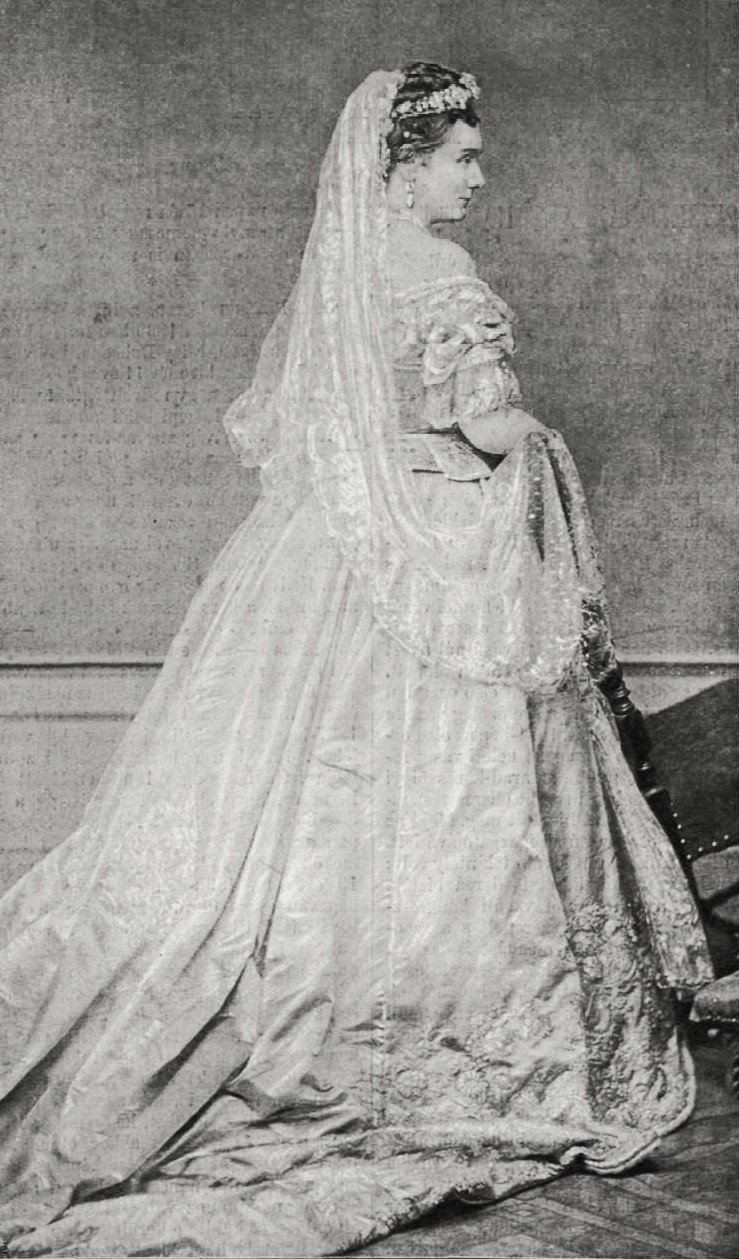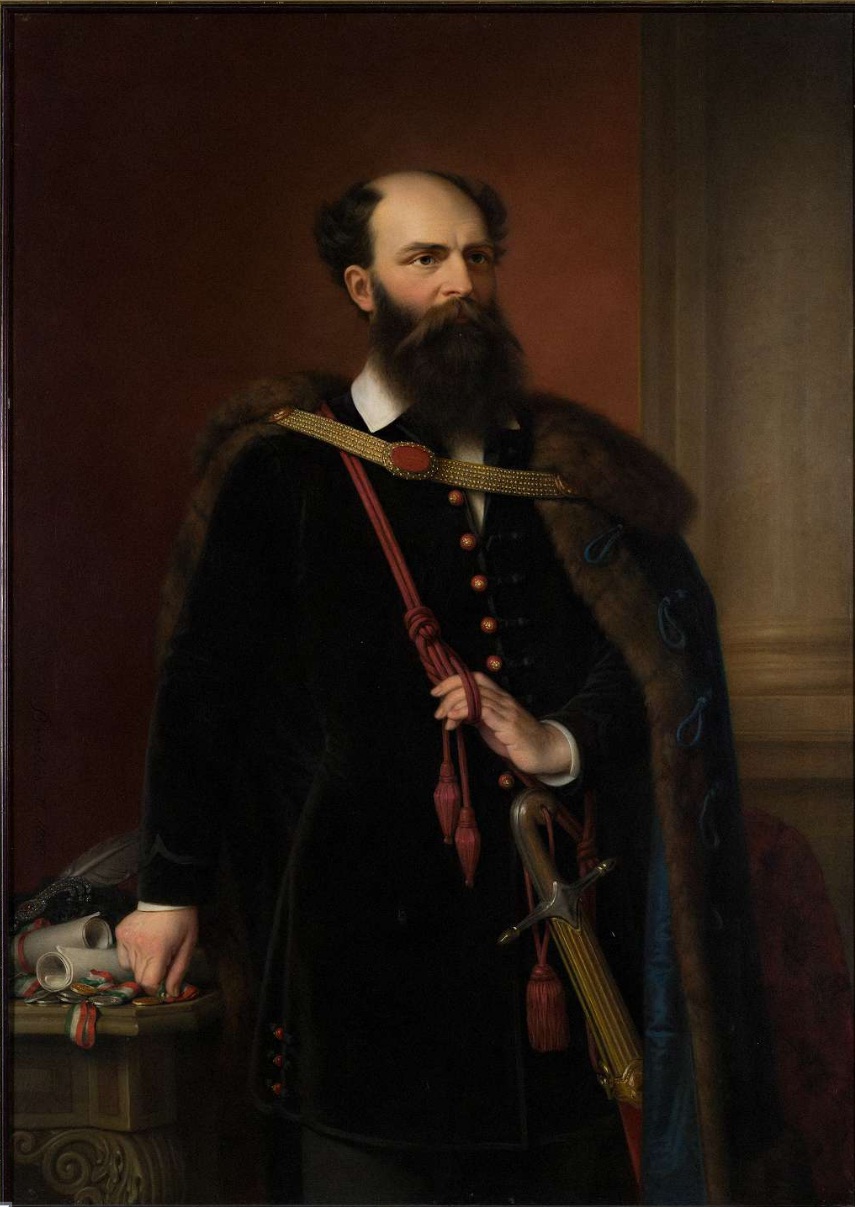|
Károly Andrássy
Count Károly Andrássy de Csíkszentkirály et Krasznahorka (February 29, 1792 – August 22, 1845) was a Hungarian politician, who served as emissary to Gömör és Kis-Hont County in the Diets of 1839 and 1844. Background His parents were Count József Andrássy, a military officer, and Countess Walburga Csáky de Körösszeg et Adorján. He married Countess Etelka Szapáry de Szapár, Muraszombat et Széchy-Sziget in Betlér, 1809. They had four children: * Kornélia (1820–1836) * Manó (1821–1891): his wife was Countess Gabriella Pálffy de Erdőd (1833–1914) * Gyula (1823–1890): Prime Minister of Hungary, Minister of Foreign Affairs of Austria-Hungary; his wife was Countess Katinka Kendeffy Countess Katinka Kendeffy de Malomvíz Andrássy (1830 – 16 May 1896) was a Hungarian noblewoman and the wife of Count Gyula Andrássy, who served as Prime Minister of Hungary (1867–1871) and Minister of Foreign Affairs of Austria-Hungary ... de Malomvíz * Al ... [...More Info...] [...Related Items...] OR: [Wikipedia] [Google] [Baidu] |
Diet Of Hungary
The Diet of Hungary or originally: Parlamentum Publicum / Parlamentum Generale ( hu, Országgyűlés) became the supreme legislative institution in the medieval kingdom of Hungary from the 1290s, and in its successor states, Royal Hungary and the Habsburg kingdom of Hungary throughout the Early Modern period until the end of World War II. The name of the legislative body was originally "Parlamentum" during the Middle Ages, the "Diet" expression gained mostly in the Early Modern period. It convened at regular intervals with interruptions from the 12th century to 1918, and again until 1946. The articles of the 1790 diet set out that the diet should meet at least once every 3 years, but, since the diet was called by the Habsburg monarchy, this promise was not kept on several occasions thereafter. As a result of the Austro-Hungarian Compromise, it was reconstituted in 1867. The Latin term ''Natio Hungarica'' ("Hungarian nation") was used to designate the elite which had partici ... [...More Info...] [...Related Items...] OR: [Wikipedia] [Google] [Baidu] |
1845 Deaths
Events January–March * January 10 – Elizabeth Barrett receives a love letter from the younger poet Robert Browning; on May 20, they meet for the first time in London. She begins writing her ''Sonnets from the Portuguese''. * January 23 – The United States Congress establishes a uniform date for federal elections, which will henceforth be held on the first Tuesday after the first Monday in November. * January 29 – ''The Raven'' by Edgar Allan Poe is published for the first time, in the ''New York Evening Mirror''. * February 1 – Anson Jones, President of the Republic of Texas, signs the charter officially creating Baylor University (the oldest university in the State of Texas operating under its original name). * February 7 – In the British Museum, a drunken visitor smashes the Portland Vase, which takes months to repair. * February 28 – The United States Congress approves the annexation of Texas. * March 1 – President John Tyler signs a bill authorizing the ... [...More Info...] [...Related Items...] OR: [Wikipedia] [Google] [Baidu] |
1792 Births
Year 179 ( CLXXIX) was a common year starting on Thursday (link will display the full calendar) of the Julian calendar. At the time, it was known as the Year of the Consulship of Aurelius and Veru (or, less frequently, year 932 ''Ab urbe condita''). The denomination 179 for this year has been used since the early medieval period, when the Anno Domini calendar era became the prevalent method in Europe for naming years. Events By place Roman empire * The Roman fort Castra Regina ("fortress by the Regen river") is built at Regensburg, on the right bank of the Danube in Germany. * Roman legionaries of Legio II ''Adiutrix'' engrave on the rock of the Trenčín Castle (Slovakia) the name of the town ''Laugaritio'', marking the northernmost point of Roman presence in that part of Europe. * Marcus Aurelius drives the Marcomanni over the Danube and reinforces the border. To repopulate and rebuild a devastated Pannonia, Rome allows the first German colonists to enter territory co ... [...More Info...] [...Related Items...] OR: [Wikipedia] [Google] [Baidu] |
Katinka Kendeffy
Countess Katinka Kendeffy de Malomvíz Andrássy (1830 – 16 May 1896) was a Hungarian noblewoman and the wife of Count Gyula Andrássy, who served as Prime Minister of Hungary (1867–1871) and Minister of Foreign Affairs of Austria-Hungary (1871–1879). Early life Kendeffy was born in Kolozsvár, Kingdom of Hungary, Austrian Empire (now Cluj-Napoca, Romania) to Count Ádám Kendeffy de Malomvíz (1795-1834) and his wife, Countess Borbála "Bora" Bethlen de Bethlen (1800–1880). Biography After the coronation of King Franz Joseph I, she became Hungarian marshalless and an intimate friend of Empress Elisabeth of Austria (''Sisi''). She died in 1896, six years after her husband. Personal life She married Count Gyula Andrássy de Csíkszentkirály et Krasznahorka in Paris, on 9 July 1856,''Paris, France & Vicinity Marriages, 1700-1907'' when Andrássy lived in emigration after defeat of the Hungarian Revolution of 1848. They had four children: * Tivadar (1857� ... [...More Info...] [...Related Items...] OR: [Wikipedia] [Google] [Baidu] |
List Of Foreign Ministers Of Austria-Hungary
This is a list of foreign ministers (german: Außenminister) of the Habsburg monarchy, of the Austrian Empire, and of Austria-Hungary up to 1918. Ministers of Foreign Affairs of the Habsburg monarchy (1720–1805) From 1664/69 the Privy Conference (''Geheime Konferenz''), a committee of the Imperial Privy Council (''Geheimrat, Geheimer Rat''), provided advice to Emperor Leopold I, Holy Roman Emperor, Leopold I whereby the Archduchy of Austria, Austrian Court Chancellor, responsible for the Habsburg 'Hereditary Lands', served as rapporteur and thereby gained increasing influence. The Habsburg diplomatic service was re-organised, when Emperor Charles VI, Holy Roman Emperor, Charles VI by resolution of 1720 declared Court Chancellor Philipp Ludwig Wenzel von Sinzendorf responsible for foreign policy issues. Upon Sinzendorf's death in February 1742, Archduchess Maria Theresa finally separated the central Habsburg State Chancellery responsible of Foreign Affairs from the domestic Austr ... [...More Info...] [...Related Items...] OR: [Wikipedia] [Google] [Baidu] |
Prime Minister Of Hungary
The prime minister of Hungary ( hu, Magyarország miniszterelnöke) is the head of government of Hungary. The prime minister and the Cabinet are collectively accountable for their policies and actions to the Parliament, to their political party and ultimately to the electorate. The current holder of the office is Viktor Orbán, leader of the Fidesz – Hungarian Civic Alliance, who has served since 29 May 2010. According to the Hungarian Constitution, the prime minister is nominated by the president of Hungary and formally elected by the National Assembly. Constitutionally, the president is required to nominate the leader of the political party who wins a majority of seats in the National Assembly as prime minister. If there is no party with a majority, the president holds an audience with the leaders of all parties represented in the assembly and nominates the person who is most likely to command a majority in the assembly, who is then formally elected by a simple majority of ... [...More Info...] [...Related Items...] OR: [Wikipedia] [Google] [Baidu] |
Pálffy De Erdőd
Pálffy or Palffy is a Hungarian surname which means "son of Pál (Paul)". The family name is common in Hungary and Slovakia. Pálffy ab Erdöd noble family The most famous bearers of the name Pálffy are the members of the Austro-Hungarian noble family Pálffy ab Erdöd. Family members include: * Paul Pálffy ab Erdöd (1580/1589–1653), Palatine of Hungary, Knight of the Golden Fleece *Johann Bernhard Stephan, Graf Pálffy ab Erdöd (1664–1751), Imperial field marshal, Palatine of Hungary, Knight of the Golden Fleece * Nikolaus VI Graf Pálffy ab Erdöd (1657/67–1732), Imperial field marshal and Palatine of Hungary, Knight of the Golden Fleece * Lipót Pálffy de Erdőd (1764–1825), Major General * Ferdinand Palffy von Erdöd (1774–1840), mining engineer in the Austrian Empire and Vienna Theatre manager *Fidél Pálffy (1895–1946), Hungarian nobleman who was a leading supporter of Nazism in Hungary Other people named Pálffy Other notable people with the surname in ... [...More Info...] [...Related Items...] OR: [Wikipedia] [Google] [Baidu] |
Betlér
Betliar () is a village and municipality in the Rožňava District in the Košice Region of eastern Slovakia, known for its manor house. Basic information * ''Location: Slovak republic, Betliar is situated in South-East part of Slovenské rudohorie in valley of river Slaná, 5 km north of town Rožňava.'' * ''Height above sea level: 311 meters.'' * ''Number of inhabitants: about one thousand.'' History The village of Betliar lies in a valley of the river Slaná, 5 km northwest of Rožňava. The first written description of the village is from the year 1330, when it is mentioned under the name Bethler (the term is of German origin meaning a cart used in copper mining). It belonged to the Bebek Hungarian noble family (of the Ákos genus) and later the Andrássy family. The inhabitants lived on mining, agriculture and forestry. The mining heritage of the village and the natural environment of the Volovské vrchy (hills) has made Betliar into a tourist destin ... [...More Info...] [...Related Items...] OR: [Wikipedia] [Google] [Baidu] |
Andrássy
The House of Andrássy is the name of a Hungarian noble family of very ancient lineage that was prominent in Hungarian history. The full family name is ''Andrássy de Csíkszentkirály et Krasznahorka''. ''Csíkszentkirály'' is a town in modern-day Romania, now called Sâncrăieni, while Krásna Hôrka is a castle in Slovakia. Recent history The present head of the family is Count Gyula Andrássy de Csik-Szent-Király et Kraszna-Horka (b. 1927), who with his family currently resides in Canada. He married as his first wife the former Renate Hiller (b. 1928) in 1958, with no issue. He married secondly in 1964 the former Lesley Trist (b. 1934). By his second wife, he has one son, Michael (b. 1967), and one daughter, Ilona (b. 1965). Count Gyula Andrássy is the son of the late Count Mihály Andrássy (1893–1990) and his late wife, ''née'' Countess Gabrielle Károlyi de Nagy-Károly (1899–1992). The paternal uncle of Count Gyula Andrássy was the late Count Imre Andrássy (1 ... [...More Info...] [...Related Items...] OR: [Wikipedia] [Google] [Baidu] |
Kingdom Of Hungary
The Kingdom of Hungary was a monarchy in Central Europe that existed for nearly a millennium, from the Middle Ages into the 20th century. The Principality of Hungary emerged as a Christian kingdom upon the coronation of the first king Stephen I at Esztergom around the year 1000;Kristó Gyula – Barta János – Gergely Jenő: Magyarország története előidőktől 2000-ig (History of Hungary from the prehistory to 2000), Pannonica Kiadó, Budapest, 2002, , p. 687, pp. 37, pp. 113 ("Magyarország a 12. század második felére jelentős európai tényezővé, középhatalommá vált."/"By the 12th century Hungary became an important European factor, became a middle power.", "A Nyugat részévé vált Magyarország.../Hungary became part of the West"), pp. 616–644 his family (the Árpád dynasty) led the monarchy for 300 years. By the 12th century, the kingdom became a European middle power within the Western world. Due to the Ottoman occupation of the central and south ... [...More Info...] [...Related Items...] OR: [Wikipedia] [Google] [Baidu] |



.jpg)


